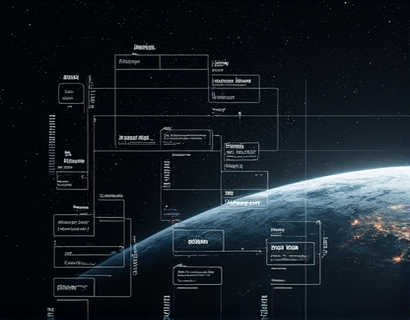Empowering Leadership: A Comprehensive Management Dashboard for Large Teams Across Industries
In the fast-paced and ever-evolving landscape of modern business, effective leadership is paramount. Leaders across various industries face the daunting task of managing large teams, each with unique challenges and requirements. To thrive in this environment, leaders need more than just intuition and experience; they require robust tools that streamline operations, enhance communication, and support strategic decision-making. This comprehensive management dashboard is designed to meet these needs, offering a sophisticated solution that empowers leaders to unlock the full potential of their teams.
Understanding the Challenges of Managing Large Teams
Managing large teams is inherently complex. Leaders must juggle multiple priorities, from day-to-day operations to long-term strategic planning. The diversity of tasks and the scale of responsibilities can often lead to disorganization and inefficiency. Key challenges include maintaining clear communication, ensuring alignment with organizational goals, and fostering a culture of productivity and innovation. Traditional management methods often fall short in addressing these issues, leading to bottlenecks and missed opportunities.
The Need for a Comprehensive Management Dashboard
A comprehensive management dashboard serves as a central hub for all management activities, providing a unified view of team performance, project statuses, and key metrics. Such a tool is essential for leaders who aim to optimize their management processes and drive their organizations forward. By leveraging advanced technology, these dashboards offer features that simplify complex tasks, enhance collaboration, and support data-driven decision-making.
Key Features of a Comprehensive Management Dashboard
- Real-Time Monitoring: Leaders can track the progress of projects and tasks in real-time, ensuring that any issues are identified and addressed promptly.
- Customizable Dashboards: Tailor the dashboard to focus on the most critical metrics and KPIs relevant to your team and organization.
- Collaboration Tools: Integrated communication features facilitate seamless collaboration among team members, reducing the need for multiple platforms and improving efficiency.
- Reporting and Analytics: Generate detailed reports and insights to support strategic planning and performance evaluations.
- Access Control: Manage user permissions to ensure that sensitive information is accessible only to authorized personnel.
- Integration Capabilities: Seamlessly integrate with existing tools and systems, such as CRM, HR, and project management software, to create a cohesive workflow.
Streamlining Operations
One of the primary benefits of a comprehensive management dashboard is its ability to streamline operations. By centralizing information and automating routine tasks, leaders can reduce manual effort and minimize errors. For instance, automated workflows can trigger notifications and actions based on predefined conditions, ensuring that critical tasks are handled without delay. This not only saves time but also ensures that processes are consistent and reliable.
Moreover, the dashboard can provide a clear overview of resource allocation, helping leaders optimize the use of human and material resources. By visualizing resource utilization, leaders can identify bottlenecks and make informed decisions to reallocate resources where needed. This level of visibility and control is crucial for maintaining operational efficiency and maximizing productivity.
Enhancing Communication
Effective communication is the backbone of any successful team. A comprehensive management dashboard enhances communication by providing a centralized platform where team members can share updates, files, and feedback. Integrated chat and discussion forums allow for real-time interactions, reducing the reliance on email and other fragmented communication tools. This ensures that everyone is on the same page and that information flows smoothly across the team.
Additionally, the dashboard can support cross-functional collaboration by enabling seamless communication between different departments. For example, a project manager can easily share progress updates with stakeholders from finance, marketing, and operations, ensuring that everyone has a clear understanding of the project's status and can contribute effectively.
Fostering Strategic Decision-Making
Data-driven decision-making is essential for leaders aiming to drive their organizations forward. A comprehensive management dashboard provides the necessary tools to collect, analyze, and visualize data from various sources. By accessing real-time metrics and KPIs, leaders can make informed decisions based on current trends and performance indicators.
Advanced analytics features, such as predictive analytics and machine learning, can further enhance decision-making capabilities. These tools can forecast future trends and identify potential risks, allowing leaders to proactively address challenges and capitalize on opportunities. For instance, a leader can use these insights to adjust resource allocation, refine strategies, or explore new market opportunities.
Case Studies and Real-World Applications
To illustrate the impact of a comprehensive management dashboard, consider a few real-world applications across different industries:
- Manufacturing: A manufacturing company implemented a management dashboard to monitor production lines and supply chain operations. The real-time data and customizable dashboards enabled the leadership to identify inefficiencies and optimize production processes, resulting in a 20% increase in output and a 15% reduction in costs.
- Healthcare: A hospital network adopted a comprehensive dashboard to manage patient care, staff scheduling, and resource allocation. The integrated communication tools improved coordination among departments, leading to faster patient turnover and higher patient satisfaction scores.
- Technology: A software development firm used a management dashboard to track project milestones, team performance, and customer feedback. The dashboard's analytics features provided valuable insights into development cycles and customer needs, enabling the team to deliver high-quality products more efficiently.
Building a Culture of Productivity and Innovation
Beyond operational efficiency, a comprehensive management dashboard can contribute to building a culture of productivity and innovation within an organization. By providing leaders with the tools to manage and support their teams effectively, these dashboards foster an environment where employees can thrive.
For instance, the ability to set clear goals and track progress helps employees stay motivated and focused. Regular feedback and recognition features within the dashboard can boost morale and encourage continuous improvement. Additionally, the collaborative nature of the platform promotes knowledge sharing and innovation, as team members can easily access and build upon each other's ideas.
Conclusion
In conclusion, a comprehensive management dashboard is an invaluable tool for leaders managing large teams across various industries. By streamlining operations, enhancing communication, and supporting strategic decision-making, these dashboards empower leaders to unlock the full potential of their teams. As businesses continue to evolve, the ability to adapt and optimize management processes will be crucial for success. Embracing a comprehensive management dashboard is a strategic step towards achieving excellence and driving growth in today's competitive landscape.










































